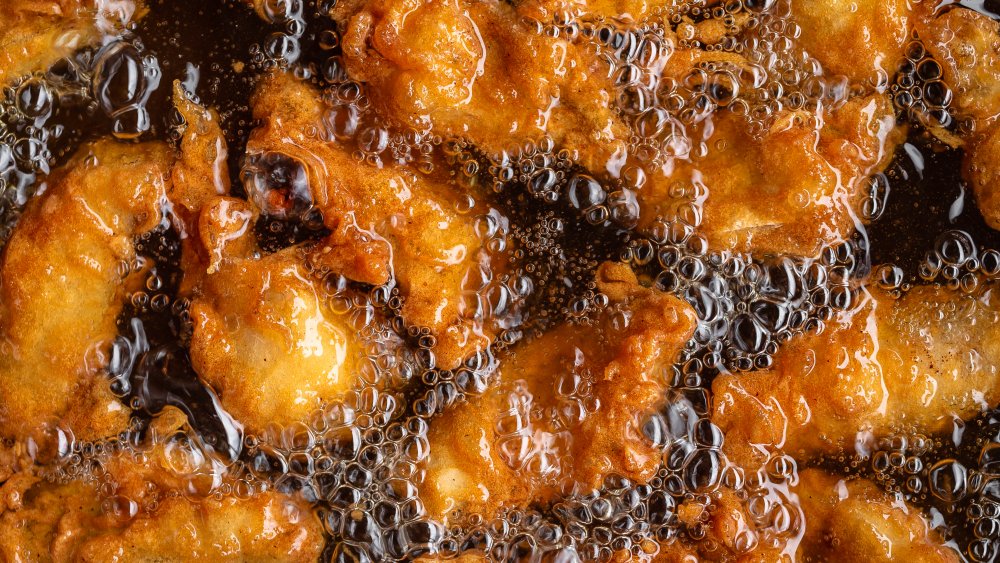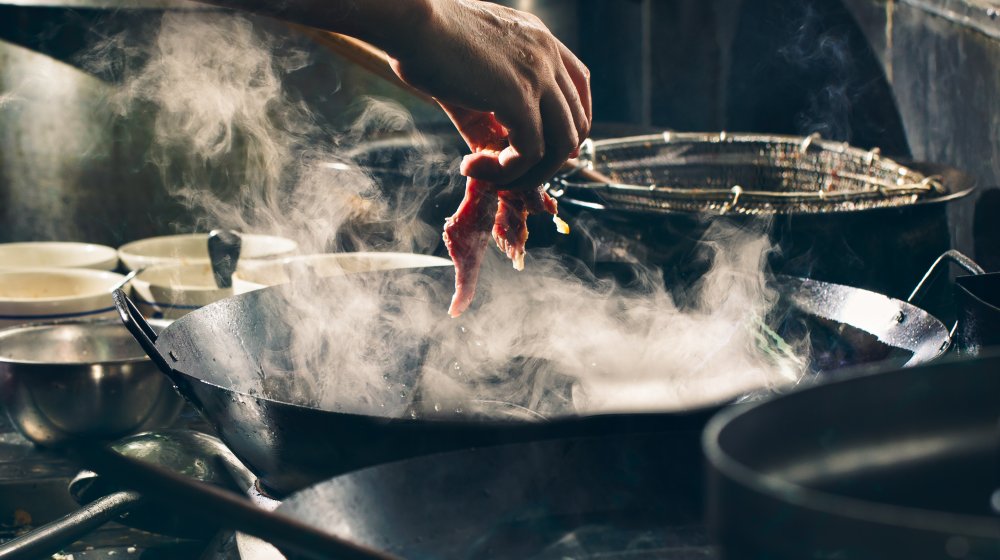These Cooking Oils Have The Highest Smoke Point
You've probably heard half a billion times that when there's smoke, there's fire. So when you're cooking with oil, it stands to reason that where there's smoke, there's a grease fire. Sometimes that reasoning pans out, and you find yourself out of a frying pan and in that grease fire. The Kitchn explains that this combustion takes place when you've overheated the bejesus out of your cooking oil. Once you've lost your connection with bejesus, you're condemned to hell's kitchen – the one run by Satan, who's rumored to be almost as mean as Gordon Ramsay. The oil boils, smokes, and finally bursts into flames. But that's the worst-case scenario.
Sometimes when there's smoke, you've just hit the smoke point of your cooking oil. The Michelin Guide observes that heating your cooking oil past its smoke point can imbue your food with a foul, burnt taste. While not as serious as a grease fire, it might make you want to extinguish your taste buds. Moreover, the breakdown of the oil's fatty acids through oxidation can unleash damaging chemical compounds that are linked with hellish illnesses like Alzheimer's and Parkinson's disease.
Not all cooking oils have the same threshold and depending on what you're cooking, you may want to choose an oil with a high smoke point to prevent your meal from being the low point of your day.
Going up in smoke point
If you're looking to sear, brown, or deep-fry a food without getting a fiery surprise from chef Satan – or worse, a fiery rebuke from chef Gordon Ramsay – the Michelin Guide recommends using an oil with a high smoke point. Sitting atop Smoke Mountain is avocado oil, which means that avocados are not only great for toast but great for toasting things. It goes up in smoke at about 520 degrees Fahrenheit. Also high on the list is refined vegetable oil, which boasts a smoke point of 468 degrees. Safflower, sunflower, and peanut oil are all tied at 450 degrees.
But what sets avocado oil apart from, say, extra-virgin olive oil, which hits its limit at a comparatively chillier 375 degrees? Generally speaking, a cooking oil's smoke point is defined by its refinement. According to Serious Eats, eliminating impurities through such processes as bleaching and subjecting them to intense temperatures boosts an oil's smoke point, extends its shelf life, and produces a neutral flavor. Raw, or "virgin," oils offer greater flavor and more minerals. But thanks to their lower smoke points, they can't take the heat and need to get out of hell's kitchen.

